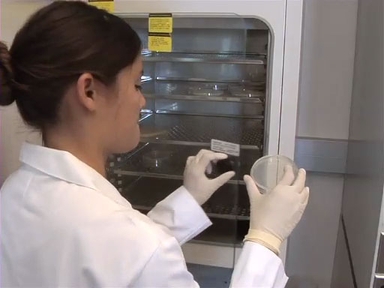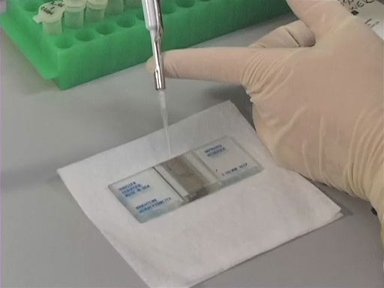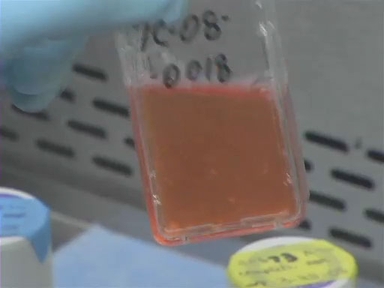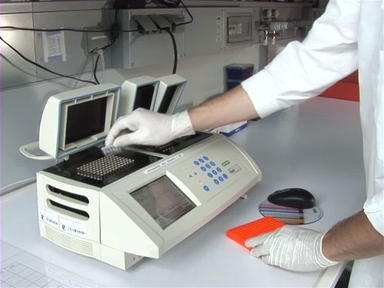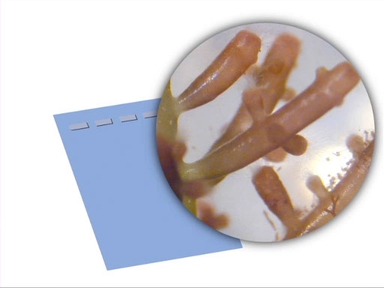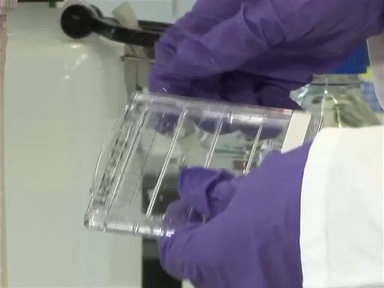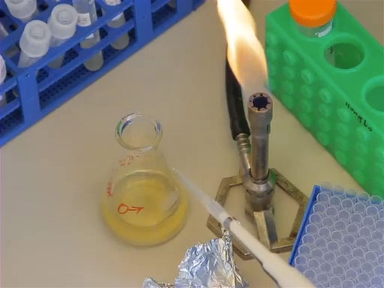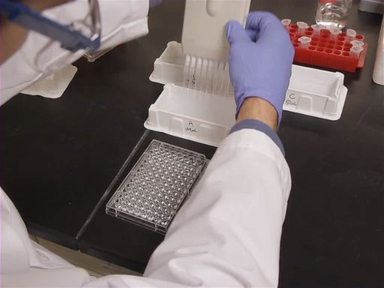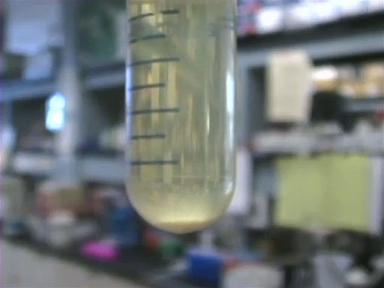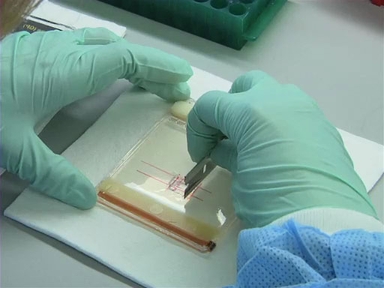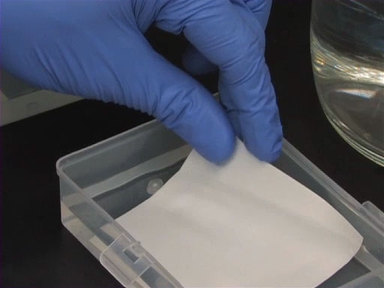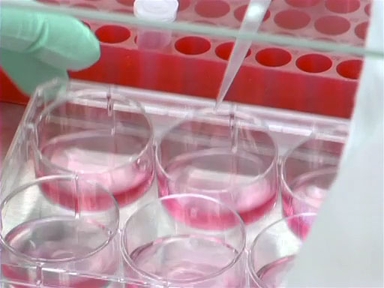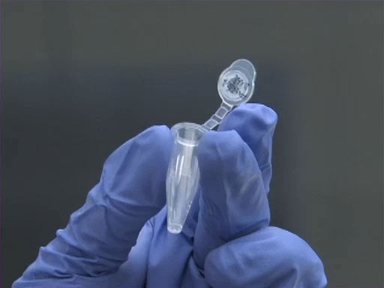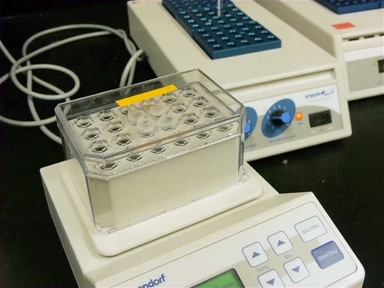Bacterial transformation is a naturally occurring process, in which bacteria ingest foreign DNA and then amplify or clone it. In the lab, this process can be induced artificially, by using high voltage electric field pulses to create pores in the bacterial cell membrane, through which plasmid DNA can pass. Electroporation refers to this method and the following video will demonstrate its principles, step-by-step procedure, and applications.
Before we talk about electroporation of bacteria, it’s important to understand the type of DNA used in these experiments: the plasmid. A plasmid is a small, circular, extrachromosomal piece of DNA that acts as a vector, a carrier of your specific DNA sequence.
Whether this sequence is a gene for a fluorescence protein in jellyfish or an enzyme from plants, it is inserted into the plasmid via a region called the multiple cloning site or MCS. This region contains specific sequences that are cleaved by restriction endonucleases or restriction enzymes. The same restriction enzymes can be used to cut out your sequence of interest so that the ends are complementary to the newly cut ends of the plasmid.
Plasmids also contain an origin of replication, abbreviated ORI, that indicates the point at which it will be replicated. When it comes to transformation the antibiotic resistance gene is of vital importance. As its name implies this gene allows the bacteria to produce an enzyme that neutralizes antibiotic allowing them to survive in antibiotic containing media.
Electroporation makes use of a specialized device called an electroporator. Typically cells are placed into an electroporation cuvette, which has electrodes on each side that make electrical contact with the machine once inserted.
Bacterial cells mixed with DNA are loaded into the electroporation cuvette and an electric field on the order a 1000 to 10,000 volts per centimeter is applied for a few milliseconds. This causes the voltage across the membrane to reach 0.5-1 volts, which is believed to lead to a rearrangement of the phospolipid bilayer that comprises the cell membrane such that pores will form. In this state plasmid DNA will pass through the membrane and when pulsing is complete the bilayer will repair itself.
Having taken up the plasmid, bacteria can then grow on agar plates containing antibiotic.
Now that we’ve learned about plasmids and the electroporation mechanism. Let’s have a look at how the procedure is conducted.
Cells that can readily take up DNA are referred to as competent cells. The most common type of competent bacteria that is transformed in molecular biology research is E. coli, which are the prokaryotic bacteria that make their home in your lower intestine. E. coli that are prepared for electroporation are referred to as electrocompetent cells.
Whenever handling bacteria, make sure the work area is as clean as possible.
Handling bacteria also requires that one practice aseptic technique. Typically this involves the use of a Bunsen burner to sterilize instruments and to create a convection current – which keeps airborne contaminants away from the workspace.
Immediately before electroporation, pre-warm media to room temperature, bring agar plates containing antibiotic to 37°C, and cool electroporation cuvettes on ice.
Next, thaw washed electrocompetent cells on ice.
Add 1-5uL of 1ng/μL cold plasmid that is salt free to bacterial cells, mix gently, and add the mixture to the cold cuvette. Make sure there are no bubbles.
Set the voltage and field strength of the electroporator to the correct settings for your cells. Here you see an electroporator being set to 1700 volts and yielding a field strength of 17kV/cm.
Wipe the outside of the cuvette dry and place it into the electroporator. Pulse the cells until you hear a beep.
Unsuccessful pulsing causes an electrical discharge, which is observable as a visible spark and audible pop. This discharge, referred to as arcing, can be the result of having too much salt in your competent cells or DNA.
The success of your transformation can be predicted by noting the time constant, which is the duration it takes for the voltage to decay after applying the pulse. When salt is present and the electroporation solution is very conductive, the decay happens rapidly, causing the discharge, and thereby killing many of your cells. For bacteria, good time constants range from 5-10 milliseconds.
Immediately after pulsing, remove the cuvette and add 1 ml of media directly to the cells. This cell containing media is placed in a tube and incubated at 37°C for 1 hour, with shaking, in order for the cells to recover.
Then, using aseptic technique add 20-200uL of the cell to an antibiotic containing agar plate. Invert the plates so that the agar is on top and so condensation does not fall into your cells and incubate overnight at 37°C.
Bacteria transformed with the plasmid should form colonies. Count the colonies and calculate the transformation efficiency, which is the number of successful transformants divided by the total amount of DNA plated.
The agar and media, which provide the nutrition for your bacteria, should be pre-prepared and sterilized via autoclaving. Allow liquid media to cool to room temperature before using and let the agar cool to 50-55˚C – the temperature at which antibiotic can be added and plates poured. Then, allow plates to cool to room temperature to solidify.
Since bacteria used in transformation are stored in the freezer, they must first be thawed on ice, spread on an agar plate without antibiotics and then grown overnight at 37˚C.
Using aseptic technique select a bacterial colony from the agar plate and grow it up in a larger 500mL culture overnight at 37°C in a shaking incubator.
While the cells are growing, prepare about a liter of deionized water and make up a 10% glycerol and water, volume to volume solution. Autoclave the solutions and let them cool at 4˚C.
Absorbance measurements are used to determine whether or not the bacteria are in their mid log phase of growth, which means they will readily take up DNA. Once cells have reached this phase, place them on ice and keep them there throughout the procedure.
Next, wash cells by separating them in two large centrifuge tubes and spin at 4°C, pour off supernatant and resuspend in cold 100mL sterile deionized water. Repeat this step at least one more time. The purpose of this step particular step is to remove salt, which will strongly affect the electroporation technique.
Perform two additional washes in 50 ml of 10% glycerol in water and finally resuspend the bacteria in this same solution.
Add 50μL of cells into multiple Eppendorf tubes. These cells are now ready for use in electroporation and should be kept at 4˚C. Or they can be flash frozen and stored at -80˚C.
As you are about to see, electroporation has many applications.
An alternative to electroporation is heat shock transformation, which relies on the exposure of the bacteria to both calcium chloride and heat in order to introduce DNA into your cells.
In general, heat shock is gentler on your bacteria than electroporation and doesn’t require low salt. Ligation reactions, those that involve inserting your target gene into the plasmid, can be used directly in heat shock transformation. Heat shock transformation is cheaper than electroporation and doesn’t rely on expensive equipment or cuvettes. On the other hand, heat shock leads to lower transformation efficiencies than electroporation and takes longer. Also it is limited to bacterial, yeast and plant protoplasts while electroporation can be applied to mammalian cells.
Here you see mouse embryonic fibroblasts being loaded into an electroporation cuvette. Once electroporation is complete, transformation efficiencies can be determined by observing the extent to which cells produce a green fluorescence protein encoded by the plasmid. Transfection is the term given to the transformation of mammalian cells, which typically requires lower field strengths than bacterial cells and higher time constants.
Electroporation can also be performed in whole animals like the developing chicken embryo you seen here. Plasmid DNA is injected into the brain of the chick and then an electroporation probe is used to apply an electric field to the brain tissue. After a day or two, green and red fluorescent proteins - encoded by the plasmid - are made by neurons, and scientists can observe structural changes in the developing chick brain.
You’ve just watched JoVE introduction to bacterial transformation by electroporation. This video introduced the plasmid as the most commonly transformed type of DNA, discussed the biophysical mechanism thought to underlie electroporation, showed a generalized procedure for conducting electroporation, and described how electroporation can be used in mammalisn system. Thanks for watching!
